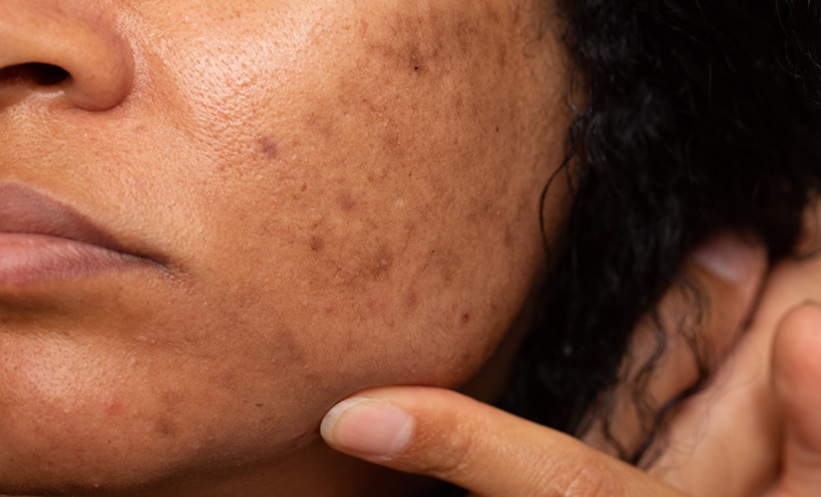Presenters: Kristian Reich,¹ Iain B. McInnes,² Richard G. Langley,³ Curdin Conrad⁴
1. University Medical Centre Hamburg-Eppendorf, Germany
2. University of Glasgow, UK
3. Dalhousie University, Halifax, Canada
4. Lausanne University Hospital CHUV, Switzerland
Disclosure: Reich has disclosed associations with AbbVie, Almirall, Amgen, Boehringer Ingelheim, Bristol Myers Squibb, Celgene, Forward Pharma, Gilead Sciences, Galderma, Janssen-Cilag, Kyowa Kirin, Leo Pharma, Eli Lilly and Company, Medac, Novartis, Ocean Pharma, Pfizer, Sanofi, and UCB; and is also Co-founder of MoonLake Immunotherapeutics. McInnes has received research support from Bristol Myers Squibb, Celgene, Eli Lilly and Company, Janssen, and UCB; and has disclosed associations with AbbVie, Bristol Myers Squibb, Celgene, Eli Lilly and Company, Gilead, Janssen, Novartis, Pfizer, and UCB. Langley has received honoraria from AbbVie, Amgen, Boehringer Ingelheim, Celgene, Eli Lilly and Company, Janssen, Leo Pharma, Merck, Novartis, Pfizer, Sun Pharma, and UCB. Conrad has declared no conflicts of interest.
Acknowledgements: Medical writing assistance was provided by Clara Berenguer and Tobias Rawson, Excerpta Medica, Amsterdam, the Netherlands.
Support: Both the posters and publication of this article were funded by Janssen. The views and opinions expressed are those of the speakers and not necessarily those of Janssen.
Citation: EMJ Dermatol. 2022;10[Suppl 2]:2-5.
Meeting Summary
The latest research on autoimmune skin disease has studied the efficacy and safety characterisation of guselkumab (GUS), a human monoclonal antibody that precisely targets the p19 subunit of IL-23 to inhibit its activity, as an approved treatment for psoriasis (PsO) and psoriatic arthritis (PsA). The poster presentations reviewed in this article discuss results on the long-term efficacy of GUS treatment in the VOYAGE 1 and 2 study trials for moderate-to-severe PsO cases, and the DISCOVER 2 study trial for PsA. Since long-term treatment with immunomodulatory biologics such as GUS might increase the risk of developing certain adverse effects in patients with PsO or PsA, these studies also analysed the benefit–risk profile of GUS.
Maintenance of Absolute Psoriasis Area and Severity Index Responses with Guselkumab for 5 Years among Patients Who Achieved Absolute Psoriasis and Severity Index ≤2 at Week 16 in the VOYAGE 1 Study
The VOYAGE 1 study is a 5-year Phase III, randomised, double-blind, placebo, and active comparator-controlled trial that compared the efficacy and safety of guselkumab with placebo as treatment for 837 patients with moderate-to-severe plaque PsO.1 In this work, Reich and colleagues developed a post-hoc analysis of the data obtained in this trial with the objective to examine the absolute Psoriasis Area and Severity Index (PASI) responses at the end of the study of those patients treated with GUS who reached a PASI score of ≤2 at Week 16 of therapy.
From the 329 patients who were randomised to GUS treatment at baseline in VOYAGE 1, 75% (n=248) achieved an absolute PASI ≤2 at Week 16. Results showed that, from Week 52 through to Week 252, 66% of these 248 patients managed to achieve a PASI 0, 80% a PASI ≤1, and 91% maintained an absolute PASI threshold of ≤2 at each analysed time point.
In conclusion, in the VOYAGE 1 trial, 91% of the patients treated with GUS reached an absolute PASI score of ≤2 for each consecutive visit through to Week 252 (5 years). Moreover, no new safety concerns were identified in this group of patients, indicating that GUS therapy through 5 years was well-tolerated.2
Efficacy and Safety of Guselkumab after 2 Years: Results from a Phase III, Randomised, Double-Blind, Placebo-Controlled Study Conducted in Biologic-Naïve Patients with Active Psoriatic Arthritis
The DISCOVER 2 study is a 2-year, double-blind, randomised, Phase III trial that compared efficacy and safety of GUS treatment with placebo in 739 biologic-naïve patients presenting active PsA, despite having received standard non-biologic therapies.3 After 1 year of GUS therapy, significant improvements of signs and symptoms of joint and skin disease have already been observed in the study as well as a favourable benefit–risk profile.3,4 In this work, McInnes and colleagues reported data on GUS efficacy and safety through the completion of the 2-year DISCOVER 2 study.
From the total of randomised and treated patients participating in the trial, 88% of them completed the study agent through to Week 100 (2 years). Results showed that 73% of patients treated with GUS achieved an American College of Rheumatology (ACR) 20 response rate, 53% achieved ACR50, and 34% achieved ACR70 after Week 24 of treatment, which were maintained through to Week 100. Moreover, 58% of patients treated with GUS achieved completely clear skin (PASI 100), while 74% of these patients achieved PASI 90, indicating strong improvements on skin clearance at Week 100. In addition, 38% of patients treated with GUS achieved minimal disease activity, and low rates of radiographic progression (between 0.46 and 1.06 mean changes in total PsA-modified Sharp van der Heijde score) were observed up to Week 100, irrespective of dosing regimen. Finally, GUS safety in patients with active PsA through 2 years was comparable to safety levels observed at 6 months and 1 year, and generally consistent with GUS safety in PsO.5,6
In conclusion, patients with PsA participating in the DISCOVER 2 trial presented robust joint and skin response rates and mean improvements from baseline until the trial completion. Furthermore, GUS treatment exhibited a favourable benefit–risk profile through these 2 years.
Low Risk of Serious Infection and Infections of Interest in Patients with Psoriasis Treated with Guselkumab for up to 5 Years in the VOYAGE 1 and 2 Phase III Trials
Although the IL-23 inhibitor GUS showed long-term efficacy in both the Phase III VOYAGE 1 and 2 studies, the long-term risk for certain types of infections is less understood.7-9 This analysis examined the risk of infection-related adverse events (AEs) in patients treated with GUS for up to 5 years, using pooled safety data from both VOYAGE 1 and 2.
Of the 1,721 patients enrolled, 78.4% (n=1,349) completed treatment up to Week 252. Across all groups, the overall rate of infections ranged from 56.8 to 62.0 per 100 person-years (PY) of follow-up, which is consistent with previously reported, shorter-term safety findings.1,10 The most common (>2.0 per 100 PY) types of infection in any group were nasopharyngitis, upper respiratory tract infections, bronchitis, and pharyngitis. The overall rate of serious infections was low, ranging from 0.52 to 0.97 per 100 PY across all groups. The most common (≥0.10 per 100 PY) were cellulitis, appendicitis, and pneumonia. Incidence rates of treatment-emergent AEs were low, including cases of Candida and herpes zoster. No patients discontinued treatment due to AEs of Candida or herpes zoster infection, and all events resolved. There were no cases of active tuberculosis.
In conclusion, patients with moderate-to-severe PsO, who were treated with GUS for up to 5 years, experienced low rates of infection-related AEs, which was consistent with previously reported safety findings. Additionally, serious infections and infection-related treatment-emergent AEs of interest were infrequent and resolved, either spontaneously or with topical or oral therapy. These results highlight how GUS is a generally well-tolerated therapy in this patient population, and how GUS is appropriate for the long-term treatment of patients with moderate-to-severe plaque PsO.
Patients with Moderate-to-Severe Psoriasis Reporting No Impact on Dermatology Life Quality Index for 156 Consecutive Weeks: A Post-Hoc Analysis of the VOYAGE 1 Trial Through 5 Years of Guselkumab Treatment
In the Phase III VOYAGE 1 trial, GUS treatment showed better results in the Dermatology Life Quality Index (DLQI) compared with adalimumab in patients with moderate-to-severe PsO for up to 48 weeks.1 However, the long-term impact of GUS treatment on DLQI and PASI is less well-understood.11-13 This post-hoc analysis of VOYAGE 1 evaluated PASI scores in patients receiving GUS who achieved a DLQI score of 0/1 for ≥156 consecutive weeks over the 5-year trial period, as well as patients with a DLQI score of 0 for ≥156 consecutive weeks.
Of the 494 evaluable patients, 230 (46.6%) achieved a DLQI score of 0/1 for ≥156 consecutive weeks. Of these patients, 143 (43.5%) started GUS treatment at Week 0, and 87 (52.7%) began at Week 16. Similarly, of these 494 patients, 138 (27.9%) achieved a DLQI score of 0 for ≥156 consecutive weeks. In this group, 89 (27.1%) started GUS treatment at Week 0, and 49 (29.7%) at Week 16. Within the patient group achieving a DLQI score of 0/1 and the subgroup of those with a DLQI score of 0, PASI scores closely mirrored the development of the DLQI scores over the 252 weeks of treatment. Patients who did not maintain DLQI 0/1 for ≥156 consecutive weeks had numerous differences in baseline characteristics such as sex, PASI score, body surface area of involvement, alcohol consumption, and BMI category compared with those who did maintain it.
In conclusion, a substantial number of patients who received GUS experienced no PsO-related impact on their quality of life (QoL) for ≥3 years, with improvements in QoL typically observed within 24 weeks of treatment initiation. These results show that treatment with GUS is strongly associated with long-term maintenance of a DLQI score of 0/1 and support the use of GUS in this patient population.
Conclusions
To summarise, the most recent data from the GUS clinical trial programme offer clinically meaningful insights into the efficacy and tolerability features of this treatment on a long-term scale. GUS demonstrated a complete or almost complete skin clearance profile through 5 years of treatment in patients from the VOYAGE 1 study, without any new safety concerns observed or PsO-related impact on their QoL. Furthermore, GUS treatment results from patients with PsA presented significantly improved joint and skin response rates from baseline, until completion of the DISCOVER 2 trial, accompanied by a positive benefit–risk characterisation of the therapy. Finally, collected data from patients treated with GUS with moderate-to-severe PsO from VOYAGE 1 and VOYAGE 2 studies showed low rates of infection-related AEs at the end of the trials.








